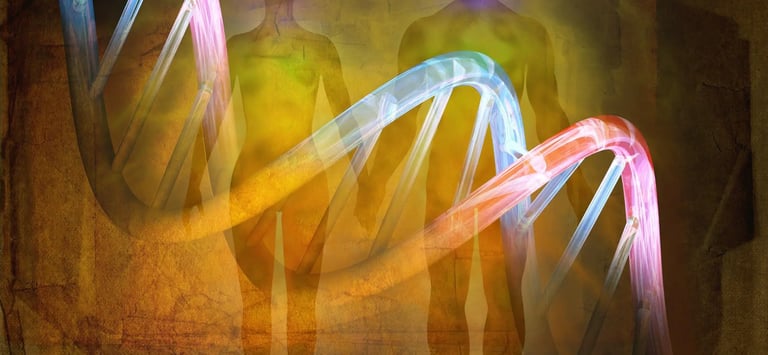Tvasta-The DNA? Decoding Ancient Wisdom for Modern Science
SPIRITUALITYSCIENCE
Sahil Sharma
10/15/20232 min read
In recent years, the ancient scriptures of India, specifically the Vedas, garnered unprecedented global attention. Among these, the Rig Veda emerged as a focus of considerable intrigue. Experts delved into the Vedas in search of scientific knowledge hidden within these ancient texts. The first groundbreaking revelations, which touched upon transgenic animal sciences, were unveiled by Dr. Chandraprakash Trivedi, an Indian Vedic scientist, at an international conference on human genetics held in 2011 in Cape Town.
Dr. Trivedi, renowned for his successful deciphering of Vedic inscriptions in the form of scientific seals discovered in the Indus Valley civilization, asserted that the Vedas held the secrets of transgenic human and animal sciences. He envisioned that the implications of these revelations, when fully understood and applied, could propel the development of human and animal life to new heights.
Dr. Trivedi explained, "The decoded Vedic hymns and depictions contained a wealth of information pertaining to transgenic animal sciences. The decoding process, however, had been slow, primarily due to limitations in human and financial resources. But Indian Vedic researchers had reached a point where they were ready to showcase their findings to modern biologists."
Intriguingly, Dr. Trivedi drew a parallel between the discovery of the double helical structure of DNA by Watson and Crick in 1955, which revolutionized biotechnology, and the ancient symbols found in the seals of the Indus Valley civilization. He identified these symbols as cytological models that delved into cellular genetic evolution on Earth through genetic recombination, with corresponding literary evidence found in the Vedic hymns. These hymns, when decoded, revealed complex processes, including the synthesis of chromosomes, DNA replication, protein translation, and nucleotide pairings for nuclear reactions.
One of the hymns decoded by Dr. Trivedi shed light on the Rig Veda's reference to 'Tvasta,' which was equated to DNA. It described Tvasta as the element that imparted shape to all living creatures, underscoring the presence of DNA in all living beings. The same hymn further identified 'Brhaspati' as the nucleus embedded within the DNA.
Beyond the intricacies of genetic science, the Vedas offered insights into a myriad of scientific and ecological phenomena. Codes pertaining to photosynthesis, the development of eukaryotic cells, bio-geochemical cycles, oxidation, reduction, and even global warming could be found within these ancient texts. Atharva Veda, in particular, elucidated the concept of global warming in the context of resource consumption.
Dr. Trivedi had undertaken a tireless journey, seeking resources and approvals from governmental and professional bodies to present his findings at the 2011 global conference. He emphasized the urgency of this endeavor, stating, "If we fail to present these facts and findings before the global community of bioscience experts at the conference, the prospect of disseminating this knowledge in the near future remains uncertain."
As the ancient met the modern, Dr. Trivedi's work stood as a testament to the enduring wisdom contained within the Vedas and the potential for these ancient texts to inform and inspire contemporary scientific discoveries. The intersection of ancient knowledge and modern science was a captivating journey that held the promise of enriching our understanding of life, nature, and the universe.


